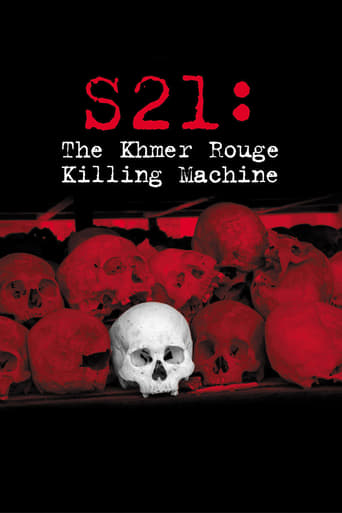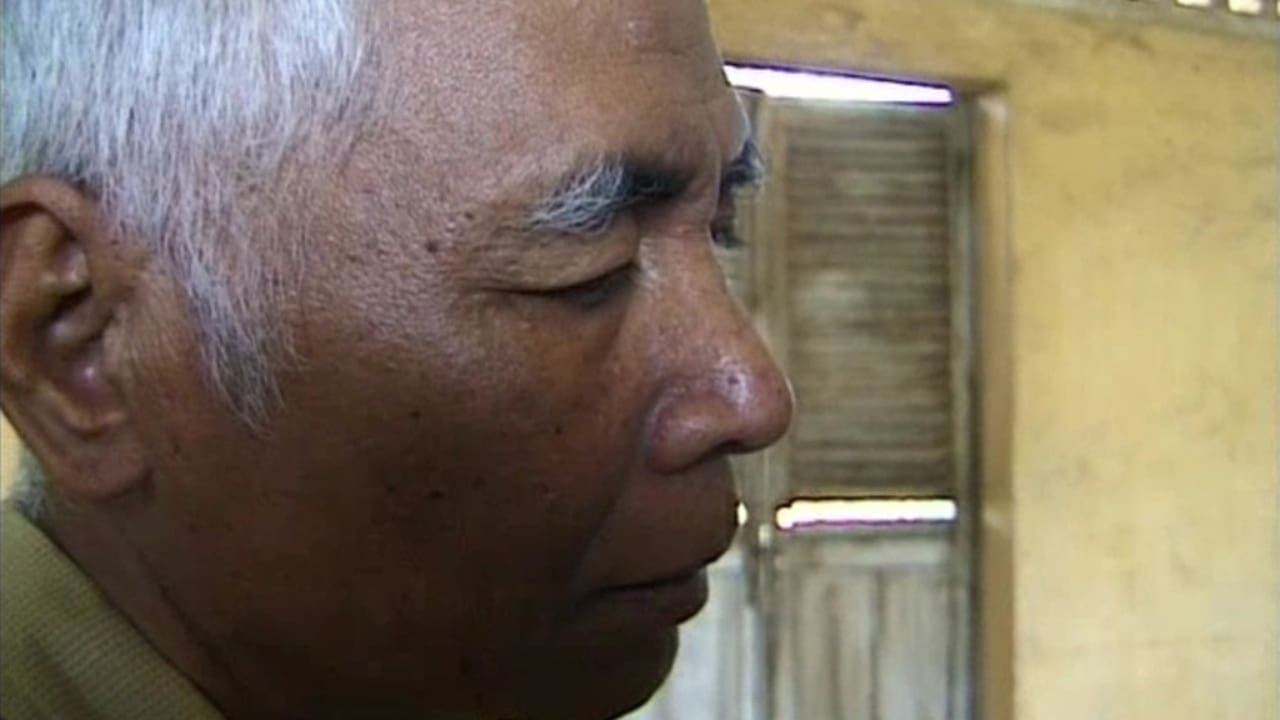MissTofu
When I saw this, I'd a decent understanding of the Khmer Rogue, not too much but not too little. And normally? I don't make such negative reviews but I was really frustrated as it had plenty of opportunities to have far more depth. This documentary could have been loads better but its construction has some fundamental flaws. There seems very little point in just assembling a group of guards and prisoners when it's evident human nature dictates that abusers are often in denial of everything they have done. Such an attempt is not just cruel but merciless, for it brings untold suffering to the victims who actually have to put up with the torment of seeing their abusers again. There was also no moderator with in-depth and relevant knowledge of said events, to intervene and to help bridge the communication between all the parties involved. Nor was there a mental health specialist who might be able to comment on the circumstances and guide everyone to a point of understanding and even redemption. What results instead is sensationalism where the victims' suffering and the abusers' depictions are exploited for the sake of eliciting a response in the audience, by accident or intention. Yes, the torture was chilling but without further exploration, what did that really add to the documentary? Missing too were historians or even academics to add layers of rich history, facts, analysis and commentaries which would link the incidents depicted to the Khmer Rogue history and even open set after set of questions. As mentioned by others, the film makes a fatal flaw of mentioning little about the Khmer Rogue or even the history of the S21 prison. I know some of the "S21 guards" were actually prisoners who were given the choice of "kill or be killed". Yet this issue is never really approached and there is no in-depth analysis of their mindsets, their motivations, trauma, etc. Nor is there any exploration of whether certain historical and even cultural aspects might have further eased the rise and acceptance of the Khmer Rogue or figures like Pol Pot or Duch. For example: did you know that anti-Semitism had existed in Germany since the medieval era, possibly because of the stoning of Jesus Christ or maybe other events? In certain Asian cultures, authoritarian figures are accepted and sometimes even welcomed, regardless of any acts they're guilty of. Is this blind acceptance a 21st century phenomenon paralleled in other cultures or was that a sign of a decaying structure or had it existed in Cambodian culture for over 1000 years? And did that play any role to the acceptance of Duch as a leader of S21? Or did Duch hold his position simply because of his ability to instill terror and fear and not anything else? And there were many other questions in my mind too. Yet, unlike most documentaries I've watched, I didn't emerge with a broader understanding on at least some of the questions. Instead, the viewers are left to assume or if not, take certain things at face value. Such an approach is fine in the realm of fiction but for non-fiction, it's never good to allow a viewer's thoughts, viewpoints, prejudices, etc. to influence his perceptions so that he might engage in guesswork. Anyone unfamiliar with the history pertaining to this subject would be in the dark and emerge with no better understanding. At the worst, someone might even emerge with partial denial of said events because of how they deduce and arrive at certain conclusions. Yes, I've seen this before and that happens whenever an approach towards such a sensitive topic isn't handled properly.
Chris_Docker
A few years ago, I find myself travelling through South-East Asia, at one point trying to piece together a baffling series of events that resulted in the genocide of a third of Kampuchea, or Cambodia as we now call it.I read as much as I can, and try to speak to survivors. But the eyes of family members well up with tears. The inexpressible grief is barely contained. Out of respect, I desist.Some time later, I see this film by internationally acclaimed human rights director, Rithy Panh. He has a better reason for asking – he survived the massacre. His work, unlike my simple desire for knowledge, would provide momentum for confessions and now a war crimes tribunal. At the 'Killing Fields' outside Phnom Penh is a tree against which children had their brains bashed out. In the film, a guard explains how parents would be separated from each other, and from their children, to minimise fuss. The adults were told not to worry: they were going to a new home. They were then blindfolded for 'security reasons' and, ammunition being scarce, hit on the back of the neck with metal bars before being cast into a pit.Executions followed three levels of torture at S.21, a school building in Phnom Penh converted into a concentration camp (and now a memorial visitors centre). Details are so hideous – humans packed like abattoir carcasses, and systematic torture, that you could be forgiven for suspecting truth has been embroidered. Except for one fact. Meticulous records of every victim were kept. Each non-person, each beating, each flaying of skin, each removal of fingernails, chemical and electrical abuses, rape. Precise details of prisoners chained to iron bars to sleep, crammed together top-to-toe, living sharing a sardine-row with the dead.Rithy Panh's master stroke brings together S.21 survivors (two of the existing three) and former guards and torturers. He encourages them to talk. To find answers. One of the hardest things, even now, is these perpetrators see themselves also as victims. They joined Pol Pot's Khmer Rouge for what seemed like all the right reasons. Once inducted, they were brainwashed, indoctrinated and trapped. Deviation meant the same fate as those they flayed alive. Most were youths at the time, easily manipulated. But, how can you forgive and move on, when no-one will admit wrong-doing? Even Pol Pot blamed the people he left in charge.Men joined the Khmer Rouge because their villages were being repeatedly bombed. With their government's approval. The much loved Prince Sihanouk had been ousted in a coup. Lon Nol, an ineffective, U.S.-backed ruler, was forcibly installed in his place. Lon Nol gave America (under Johnson and Nixon) 'permission' for what became the largest bombing campaign in human history. Two and three-quarter million tons of bombs – the revised figure released by the Clinton administration – was more than the total dropped by all the allies in the whole of World War Two (which only came to two million, even including Hiroshima and Nagasaki). Whole areas of the country became pock-marked, aerial chemical deforestation destroyed livelihoods and created famine and disease. Thousands killed, many more permanently displaced. The Khmer Rouge leaders kept their extreme agenda – a form of rural, back-to-basics communism – completely secret until they were installed in power. Then the purges started. Lon Nol supporters were followed to the grave by academics or anyone tainted with 'western' ideas. Anyone opposing Pol Pot, or whose name was elicited under extreme torture. The population was turned out of the cities, dying of starvation. With no-one else to purge, the despots found traitors to execute its own members.Kampuchea's leading doctor, Swiss born Beat Richner, adamantly told me that without American intervention – which had been aimed ironically at stopping communism in the region – there would have been no Khmer Rouge. No Pol Pot victory. Richner worked in Kampuchea before, during and after Pol Pot, and his coal-face assessment agrees with most historians. But it is controversial: the U.S. military claim that Pol Pot would have won anyway. Ordinary Cambodians are still grieving rather than blaming. Rithy Panh's film exposes horror without finger-pointing. There are no 'lessons to be learnt.' Millions died – estimates say around a third of the population, two to three million. (And this in a country smaller than Great Britain. As a benchmark comparison, Hitler exterminated six million Jews .) While Panh documents the existence of atrocities, he does little to substantiate the bigger picture, which has to be gleaned elsewhere or from casual remarks of the former guards.Rithy Panh's film, S.21 – The Khmer Rouge Killing Machine, has no real ax to grind – in the tradition of best documentary, it simply tries to provide a window. While it is powerful evidence, many viewers might find it emotionally less satisfying than more box-office friendly film by Roland Joffé, The Killing Fields, which (symbolically) suggests the West's responsibility by the journalist who 'uses' his Cambodian friend for his own ends, and also has more of a story. Either way, it is a country that makes me ashamed to be a Westerner. Yet Cambodians have more to worry about than my sense of emotional well-being. Avoiding hunger, or the thousands of landmines that still litter their country. In Joffe's film, an American journalist travels to a Red Cross camp to be reunited with a Cambodian colleague he deserted to his fate. "Do you forgive me?" he asks. The Cambodian answers with a smile, "Nothing to forgive, Sydney, nothing to forgive." Although it won many awards, Panh's movie is rarely shown outside of Cambodia. There you can pick it up for about $3. From one of the many maimed or desperate hawkers that haunt the road outside Tuol Sleng Genocide Museum. This place formerly known as Security Prison 21, or 'S.21' for short, still has living ghosts. The film just tells us where they came from.
Boddah_Buddah
The Khmer Roug massacres were vicious, to say the least. This documentary informs the audience of this and impresses upon them the torture that only few survived. Without having any knowledge of the history that led up to these events, I left the theater in the same state. I understood that a massacre had occurred, but the extent was not identified in any terms more than abstract death. The narration was slow and rather boring. I practically fell asleep three times during the showing because of the lack of information presented to me and the mediocre filming.The film also lacked integration of background information regarding the history of the country and expected the viewer to have that knowledge before entering the theater. It was a compilation of two sides coming together to share their stories of pain. Truly, it was a horrible incident, but the continuing narration by the soldiers through every move they made when picking up and delivering a prisoner was rather unnecessary and added about twenty minutes of film that was not needed.The two hours and eight dollars I spent on this film would have been better spent on a pony ride. I recommend picking up a book before going to this movie, that is if you choose to do so. Beware that going in without being informed about the Khmer Roug massacre will result in you leaving with the same amount of knowledge with the addition of numerous tragic stories to amplify your interest, but it delivers nothing of substance.
Jose Guilherme
I like documentaries, usually. I certainly thought this one lacking thou. First the narrative is slow. The purpose of the movie isnt clear cut. The only novelty is interviewing former guards and there "naivety".
Films have the resource of stimulating the visual not only the intelectual... this film/documentary barely stimulates us visually. A few shots of some paintings and the old buildings where the atrocities were commited only. Some shock value lacking.I recomend it only for people who know nothing of the Khmer Rouge and their history. Its certainly worth to learn of what happens when governements get into a spiralling paranoia and how easily people can get to commit attrocieties and kill.


 AD
AD
